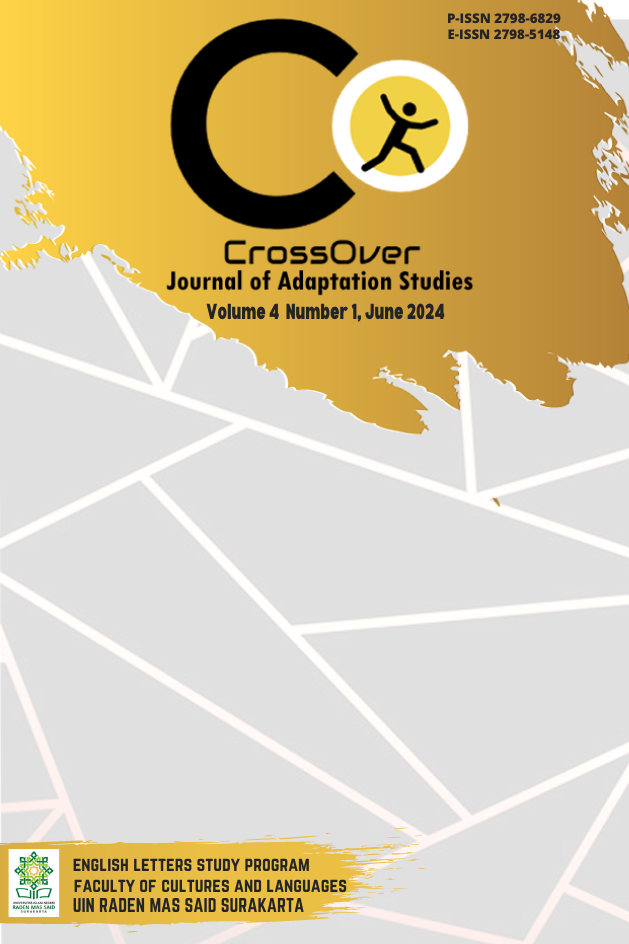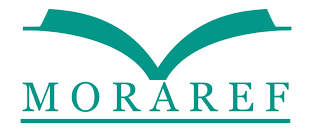WHEN HAIR TALKS: HOW HAIRSTYLES INFLUENCE THE PERSONALITY OF THE MAIN CHARACTER IN THE K-DRAMA ADAPTATION OF THE WEBTOON PERFECT MARRIAGE REVENGE
DOI:
https://doi.org/10.22515/crossover.v4i1.9374Keywords:
adaptation, hair, stereotypes, personality, blonde, brunetteAbstract
Hair plays a crucial role in a woman's identity, serving both aesthetic and expressive purposes, and often reflecting personality traits (Cunningham et al., 1997). This study explores the changes of stereotypes associated with hair types and colors in the Korean drama adaptation entitled Perfect Marriage Revenge from a Webtoon series. Using Hutcheon's (2013) adaptation theory and Cunningham et al.'s (1997) insights on hair and personality, The research examines how haircolors in the drama adaptation differs from the original Webtoon series and how it affects the character’ss personality. Cunningham et al. (1997) suggested that hair colors influences characteristics: blonde hair is seen as feminine, attractive, and emotional, while brunette hair is linked to intelligence and structure. This qualitative study analyzes visual and textual data from both the Webtoon and K-Drama, employing a comparative method to identify differences in hairstyles and character portrayals. Findings reveal that Han Yi Joo's character undergoes a transformation influenced by changes in hair color in both the original and adapted works. The changes also happen in the personality of the same character, which means that the adaptation version takes in to account both hair color and its stereotype.
Downloads
References
Burr, V., & Dick, P. (2017). Social constructionism. Palgrave Macmillan UK. https://doi.org/10.1057/978-1-137-51018-1_4
Cunningham, M. R., Druen, P. B., & Barbee, A. P. (1997). Angels, mentors, and friends: Trade-offs among evolutionary, social, and individual variables in physical appearance. In J. A. Simpson & D. T. Kenrick (Eds.), Evolutionary social psychology (pp. 109–140). Lawrence Erlbaum Associates, Inc.
Dechter, E. K. (2015). Physical appearance and earnings, hair color matters. Labour Economics, 32, 15–26. https://doi.org/10.1016/j.labeco.2014.11.002
Gardner, B. B., & Adam, D. L. M.(1934). Colorimetric analysis of hair color. American Journal of Physical Anthropology, 19(2), 187–201. https://doi.org/10.1002/ajpa.1330190219
Greenwood, D., & Isbell, L. M. (2002). Ambivalent Sexism and the Dumb Blonde: Men’s and women’s reactions to sexist jokes. Psychology of Women Quarterly, 26(4), 341–350. https://doi.org/10.1111/1471-6402.t01-2-00073
Guéguen, N., & Lamy, L. (2009). Hitchhiking women’s hair color. Perceptual and Motor Skills, 109(3), 941–948. https://doi.org/10.2466/pms.109.3.941-948
Heckert, D. M. (2003). Mixed Blessings: Women And Blonde Hair. Free Inquiry in Creative Sociology, 31(1), 47–72. https://ojs.library.okstate.edu/osu/index.php/FICS/article/view/1488
Hutcheon, L. (2006). A theory of adaptation. Routledge. https://doi.org/10.4324/9780203957721
Juni, S., & Roth, M. M. (1985). The Influence Of Hair Color On Eliciting Help: Do Blondes Have More Fun?. Social Behavior and Personality, 13(1), 11–14. https://doi.org/10.2224/sbp.1985.13.1.11
Johnston, D. W. (2010). Physical appearance and wages: Do blondes have more fun? Economics Letters, 108(1), 10–12. https://doi.org/10.1016/j.econlet.2010.03.015
Lawson, E. D. (1971). Hair color, personality, and the observer. Psychological Reports, 28(1), 311–322. https://doi.org/10.2466/pr0.1971.28.1.311
Mesko, N., & Bereczkei, T. (2004). Hairstyle as an adaptive means of displaying phenotypic quality. Human Nature, 15(3), 251–270. https://doi.org/10.1007/s12110-004-1008-6
Opie, T. R., & Phillips, K. W. (2015). Hair penalties: the negative influence of Afrocentric hair on ratings of Black women’s dominance and professionalism. Frontiers in Psychology, 6. https://doi.org/10.3389/fpsyg.2015.01311
Rich, M. K., & Cash, T. F. (1993). The American image of beauty: Media representations of hair color for four decades. Sex Roles, 29(1–2), 113–124. https://doi.org/10.1007/bf00289999Rich, M. K., & Cash, T. F. (1993). The American image of beauty: Media representations of hair color for four decades. Sex Roles, 29(1–2), 113–124. https://doi.org/10.1007/bf00289999
Rossi, P., Herter, M., Costa, D., & Borges, A. (2014). “Are Blondes More Hedonic than Brunettes?” Stereotype Effects on Willingness to Pay for Hedonic and Utilitarian Products. Developments in marketing science: proceedings of the Academy of Marketing Science (p. 299). https://doi.org/10.1007/978-3-319-10951-0_109
Sorokowski, P. (2008). Attractiveness of Blonde Women in Evolutionary Perspective: Studies with Two Polish Samples. Perceptual and Motor Skills, 106(3), 737–744. https://doi.org/10.2466/pms.106.3.737-744
Swami, V., Furnham, A., & Joshi, K. (2008). The influence of skin tone, hair length, and hair colour on ratings of women’s physical attractiveness, health and fertility. Scandinavian Journal of Psychology, 49(5), 429–437. https://doi.org/10.1111/j.1467-9450.2008.00651.x
Toerien, M., & Wilkinson, S. (2003). Gender and body hair: constructing the feminine woman. Women’s Studies International Forum, 26(4), 333–344. https://doi.org/10.1016/s0277-5395(03)00078-5
Weir, S., & Fine-Davis, M. (1989). ‘Dumb Blonde’ and ‘Temperamental redhead’: The effect of hair colour on some attributed personality characteristics of women. Irish Journal of Psychology/the Irish Journal of Psychology, 10(1), 11–19. https://doi.org/10.1080/03033910.1989.10557730
White, M. (1999). Representation of facial expressions of emotion. The American Journal of Psychology/American Journal of Psychology, 112(3), 371. https://doi.org/10.2307/1423637
Wijaya, E. K. (2017). The stereotype of blonde women in Legally Blonde. Thesis. UIN Sunan Gunung Djati. http://digilib.uinsgd.ac.id/32274/
Downloads
Published
How to Cite
Issue
Section
Citation Check
License
Copyright (c) 2024 Julia Absara Yusuf, Hanna Dorina Riska Saputri, Sellyana Tungga Dewi

This work is licensed under a Creative Commons Attribution-ShareAlike 4.0 International License.
Authors retain copyright and grant the journal right of first publication with the work simultaneously licensed under a Creative Commons Attribution 4.0 International License that allows others to share the work with an acknowledgment of the work's authorship and initial publication in this journal.

















